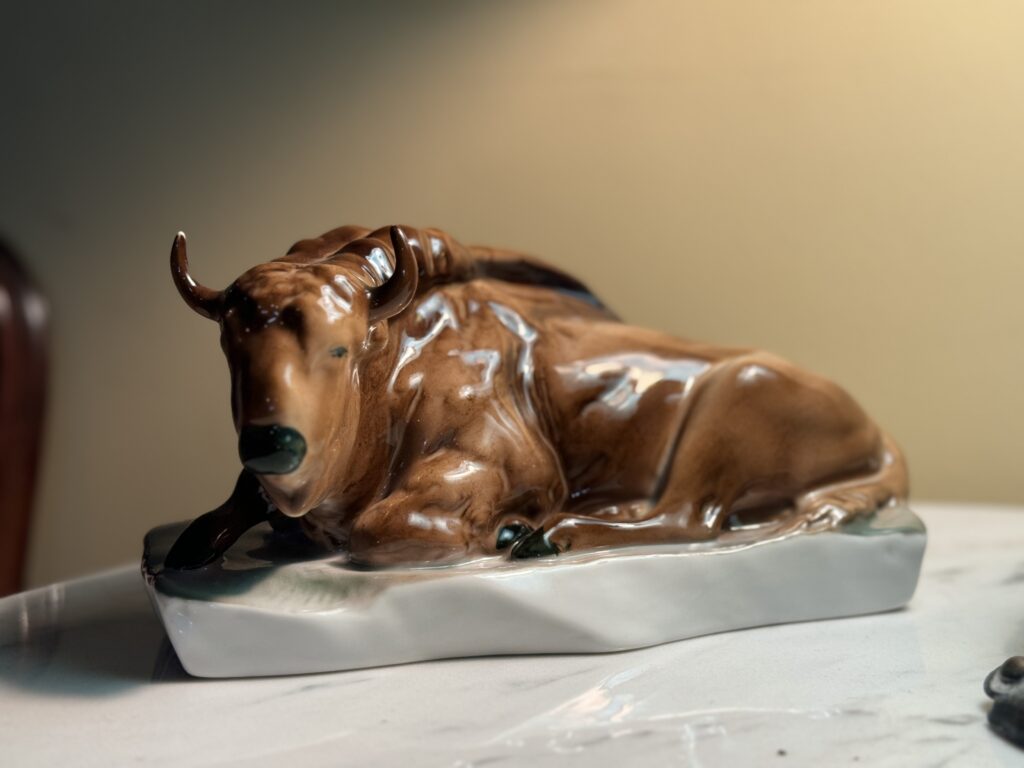Vintage Hungarian Porcelain: The Timeless Elegance
The world of antiques is filled with treasures that tell stories of artistic excellence and cultural heritage. Among these, antique and vintage Hungarian porcelain stands out for its exquisite beauty and craftsmanship. In this blog post, we delve into the rich history and unique characteristics that make Hungarian porcelain a coveted item among collectors and art enthusiasts worldwide
The Legacy of Hungarian Porcelain:
Hungarian porcelain has a storied history, dating back to the early 19th century. The region, blessed with abundant kaolin – a key ingredient in porcelain making – became a hub for exquisite porcelain production. The most renowned manufactories, like Herend and Zsolnay, were not just businesses; they were artistic institutions where creativity and craftsmanship converged.
Herend Porcelain: A Synonym for Excellence:
Founded in 1826, the Herend Porcelain Manufactory quickly gained fame for its intricate hand-painted and gilded pieces. Herend’s designs often feature naturalistic and Oriental motifs, a nod to the influences that shaped European art in the 19th century. The painstaking attention to detail in each brush stroke and the vibrant use of colors make Herend porcelain a masterpiece in every sense.
Zsolnay Porcelain: The Iridescent Marvel:
Zsolnay, established in 1853 in Pécs, brought innovation to Hungarian porcelain with its unique ‘Eosin’ glaze, creating an iridescent effect that was nothing short of magical. The Art Nouveau and Secessionist styles of Zsolnay pieces are distinct, reflecting the artistic movements of the era. The ethereal quality of Zsolnay porcelain is a testament to the experimental spirit that drove Hungarian artisans.

Diversity in Styles and Designs:
Apart from Herend and Zsolnay, there are other notable names like Hollohaza, Fischer, and Gorka Livia, each contributing uniquely to the Hungarian porcelain legacy. Hollohaza is celebrated for its folk-art-inspired designs, Fischer for classical motifs, and Gorka Livia for her modernist approach to ceramics. This diversity showcases the rich tapestry of Hungarian art and culture.
Collecting Hungarian Porcelain:
For collectors, vintage Hungarian porcelain is not just about aesthetic appeal; it’s about owning a piece of history. Each piece, whether a delicate Herend vase or a Zsolnay figurine, carries with it stories from the past, offering a glimpse into the artistic endeavors of bygone eras. The value of these pieces goes beyond the monetary; it’s about the joy of preservation and appreciation of art.
Antique and vintage Hungarian porcelain is a realm where history, art, and craftsmanship intertwine. As we explore these timeless pieces, we are reminded of the enduring beauty of human creativity. Whether you are a seasoned collector or a newfound admirer, the world of Hungarian porcelain is replete with wonders that await your discovery.
In a world that often moves too quickly, these porcelain pieces invite us to pause and appreciate the finer details, the stories they tell, and the legacy they carry. Let’s cherish and preserve these artistic treasures for generations to come.
Author’s Note:
I hope this journey into the world of antique and vintage Hungarian porcelain has inspired you to explore and appreciate the rich heritage of this exquisite art form. The beauty of collecting is not just in the objects we gather but in the stories and history, they embody. Happy collecting!
Our eBay store, “The Vintage Flipper Store” has Hungarian pieces for sale!
A Rich History
Hungarian porcelain has a rich history with several notable companies contributing to its legacy. Here is a list of some of the most prominent companies known for making Hungarian porcelain:
- Herend Porcelain Manufactory: Founded in 1826, it’s one of the most famous Hungarian porcelain manufacturers, known for its hand-painted and gilded pieces.
- Zsolnay Porcelain Factory: Established in 1853 in Pécs, this company is renowned for its unique ‘Eosin’ glaze and Art Nouveau style.
- Hollohaza Porcelain Factory: With a history dating back to the 18th century, Hollohaza is known for its bright, folk-art-inspired designs.
- Fischer J Porcelain Manufactory: Located in Budapest, Fischer was known for its fine porcelain items with intricate designs and classical motifs.
- Gorka Livia: Though more of an individual artist than a factory, Gorka Livia (1925–2011) was an influential figure in Hungarian ceramics and her works are highly regarded.
- Aquila Porcelain Factory: Known for its Art Deco styles, Aquila specializes in porcelain products with bold, contrasting colors and geometric patterns.
- Kalocsa Porcelain: Known for its decorative pieces that often feature traditional Hungarian motifs and vibrant hand-painted designs.
- Pirkenhammer Porcelain Factory: Founded in 1803, although not originally Hungarian, it became part of Hungary later due to border changes. Known for high-quality porcelain and artistic designs.
- Drasche Porcelain Factory: While less known internationally, Drasche produced quality porcelain wares, primarily in the 19th and early 20th centuries.
- Bátaszék Porcelain Factory: Established in the 20th century, known for producing both decorative and functional porcelain items.
Each of these manufacturers has contributed to the rich tapestry of Hungarian porcelain, with distinct styles and techniques that reflect the country’s artistic and cultural heritage. Some of these companies, like Herend and Zsolnay, are still in operation today and continue to produce high-quality porcelain items that are cherished by collectors and enthusiasts around the world.

